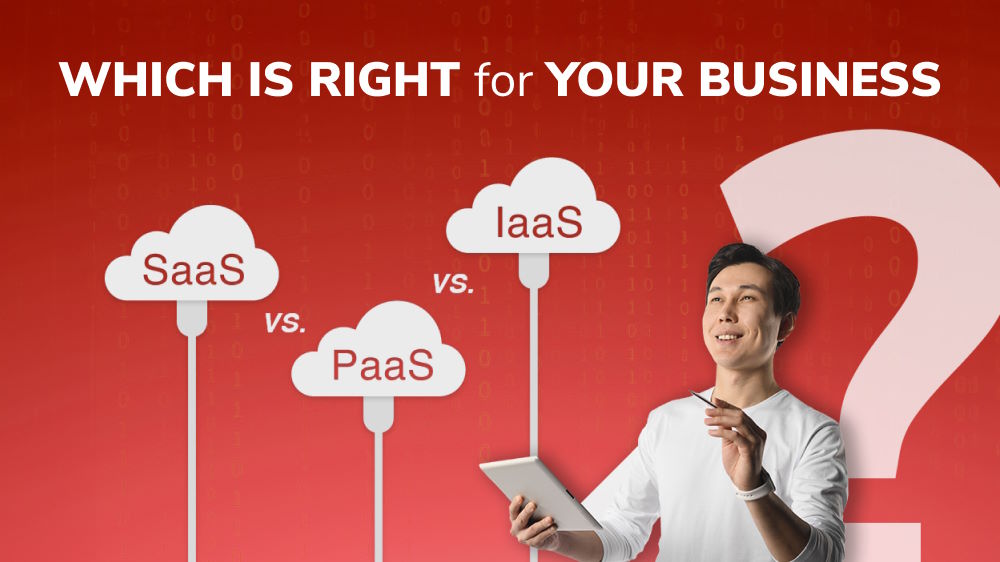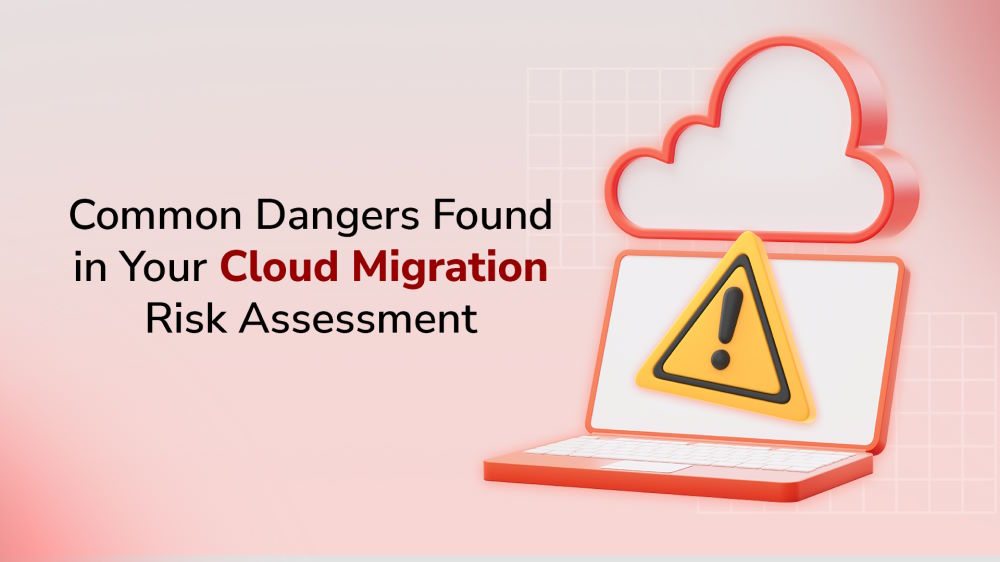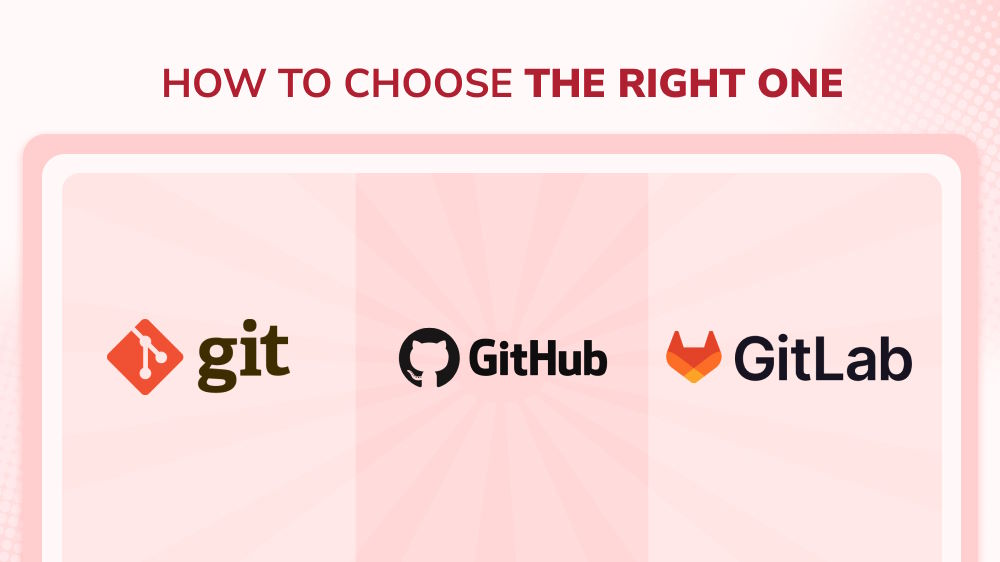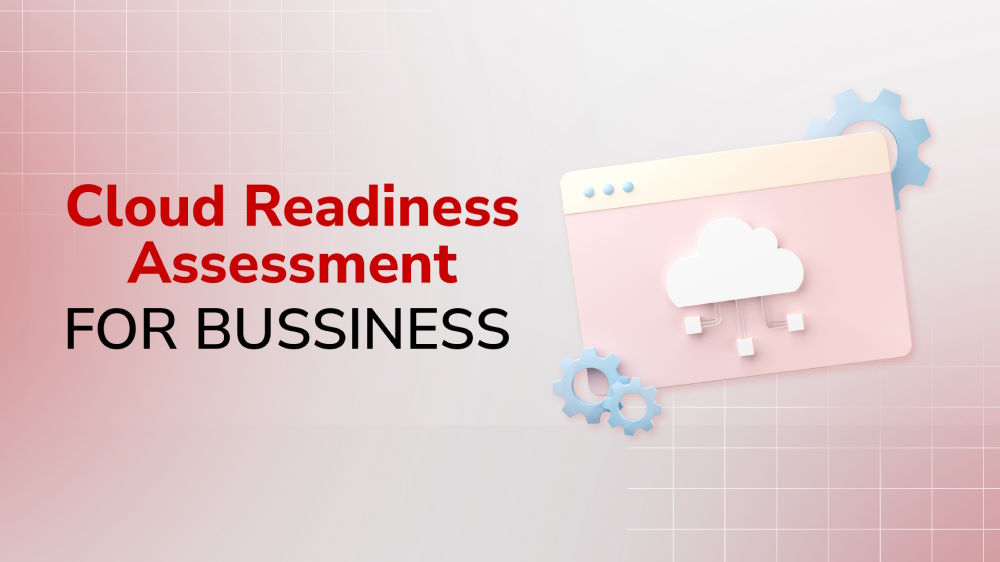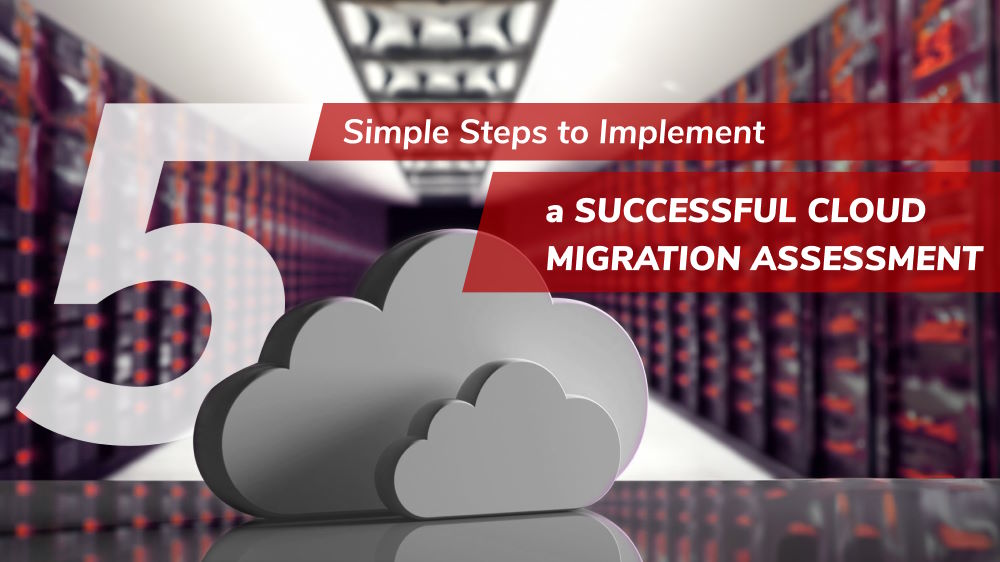
Cloud Deployment Models Explained: Architecture, Ownership, and Access Control
Your business is moving to the cloud, but are you truly prepared for the biggest decisions ahead? In a world where 92% of businesses are already on a multi-cloud path, understanding ‘what is cloud services’ is no longer enough. This article skips the basics and dives deep into the technical blueprints of public, private, hybrid, and community clouds. You’ll uncover the secrets behind each model’s architecture, ownership, and access control: the core pillars that determine your security, cost, and scalability.
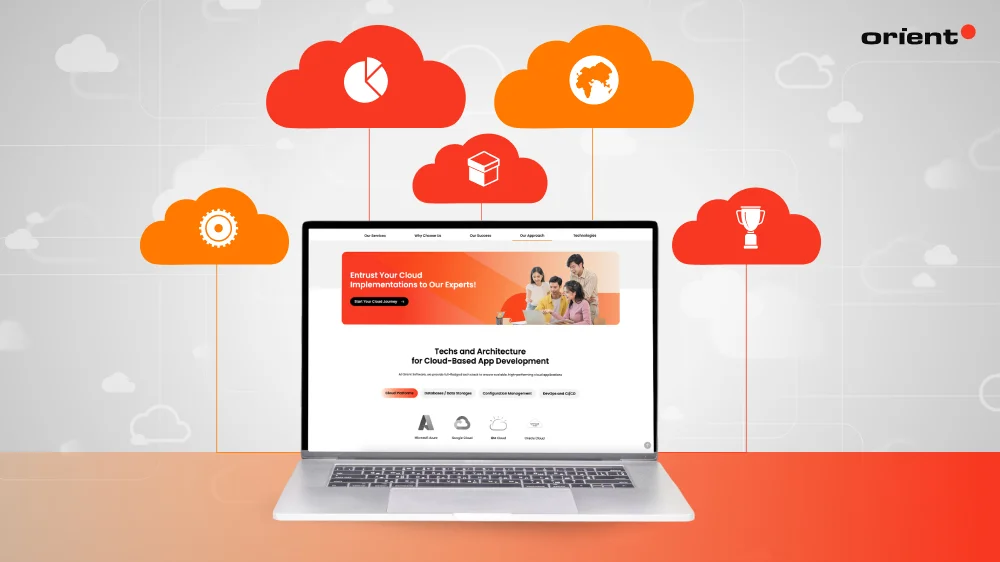
Content Map
More chaptersNowadays, when digital transformation is not a luxury but a necessity, cloud computing is the fundamental technology for businesses of all sizes. However, the path to the cloud is not a one-size-fits-all way. The selection of the appropriate cloud deployment model is a strategic move with an underlying fundamental influence on the architecture, security, and long-term sustainability of an organization.
The importance of understanding these cloud deployment models is greater than ever considering the fact that the cloud market is rapidly expanding. In Q2 2024, the amount spent on cloud infrastructure services across the globe reached $79 billion, which is 22% more than it was in the past year. Moreover, since 92% of companies are employing a multi-cloud strategy, the distinctions between these two models are becoming unclear, and a delicate interpretation of them is a must.
The public cloud has the largest market share of approximately 57% in 2024, but the hybrid cloud segment is likely to experience the highest growth rate due to the fact that it requires flexibility, integration with artificial intelligence, and a cost-control balance.
Despite this widespread adoption, many organizations face challenges in optimizing their cloud strategies. A significant number reports inefficiencies and cost overruns due to misaligned deployment models. The choice between Public, Private, Hybrid, and Community Clouds is more than a technical decision; it’s a strategic one that impacts performance, security, and cost management.
Understanding the unique characteristics and trade-offs of each deployment model is essential for aligning cloud strategy with organizational goals, ensuring efficiency, security, and scalability across all workloads.
What Are Cloud Deployment Models?
In essence, the cloud comprises a system of many servers and data centers that are spread out in various locations and are interconnected through a network or intranet connection. The computing power, storage, and networking infrastructure that organizations rely on for the implementation of digital services depend on these cloud resources.
Virtualization technologies enable the cloud to be very flexible, as there is a possibility of having several workloads operating on the same physical hardware being isolated.
The cloud deployment is the way determining where to deploy these workloads, their type, and to whom they are under the control of. Depending on their deployment needs and objectives, some deployments can take advantage of the shared infrastructure to support maximum scalability and cost savings, and other deployments need specific resources to guarantee security and compliance.
The models of cloud deployment are usually divided into four major types with the different approaches to architecture, ownership, and control towards access:
- Public Cloud: Participates in the use of common infrastructure under the management of the cloud service providers, with scaling and model costs that are paid on demand.
- Private Cloud: Offers dedicated infrastructure that is managed by a single organization and which is more secure and helps with sensitive workloads.
- Hybrid Cloud: It is a combination of both a Public and a Private Cloud, which enables distributed allocation of workloads with some level of control on vital resources.
- Community Cloud: Shares infrastructure among organizations with common compliance or operational requirements, balancing collaboration with governance.
Every deployment model has its own pros and cons. Having knowledge of those differences is essential in ensuring the creation of a cloud strategy aligned with the business objectives, maximization of cost, improved security, and the efficiency with which to manage the cloud resources.
In the following section, each of the models will be discussed further, detailing how they work and when they would best suit a particular workload.
The Public Cloud Model
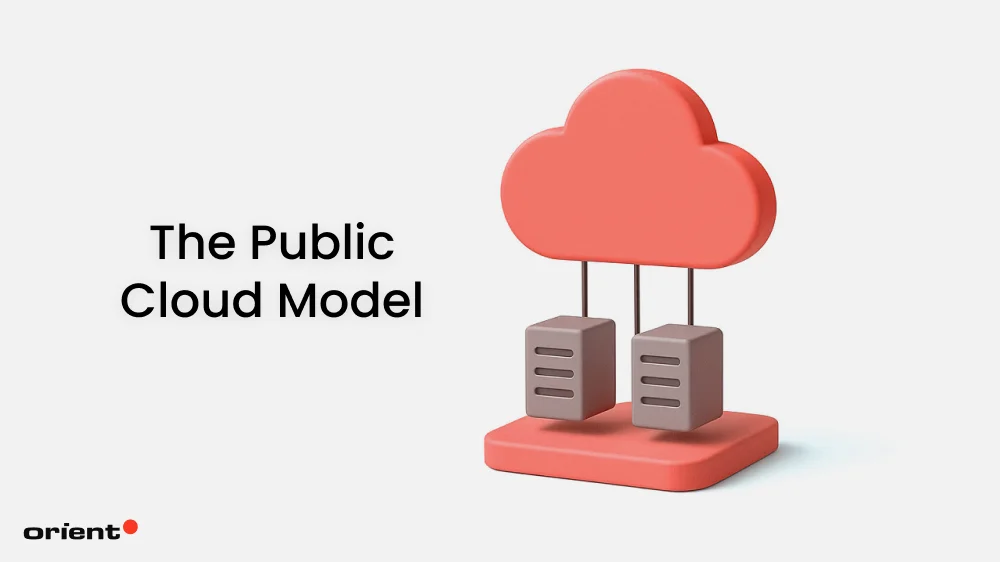
Architecture
Multi-tenant Environment: The Public Cloud functions similarly to an apartment building in a high-rise building: numerous “tenants” (user accounts) actively share the same cloud infrastructure (servers, storage, and networking). Isolating each apartment through walls and locks is the same as virtualization technologies, which ensures that workloads remain segregated on the same hardware. This multi-tenant type of model enables the cloud providers to optimize their efficiency, scale at very fast rates, and also optimize the costs.
However, it comes with the challenge of the noisy neighbor, where the intensive use by one tenant can have an adverse impact on the performance of other tenants in the instance that isolation mechanisms are not properly applied.
Virtualization and Logical Isolation: In order to eliminate these risks, cloud computing service providers use hypervisors to partition physical servers into multiple virtual machines and establish Virtual Private Clouds (VPCs) into logically isolated units of the network. Such technologies make sure that although the cloud resources are shared, organizations enjoy the feel of control and security of a dedicated environment, which is critical in the operation of critical workloads in a shared deployment model.
Ownership
Provider-Managed: Under this type of cloud deployment, the service provider (AWS, Microsoft Azure, Google Cloud Platform, etc.) owns and controls all of the infrastructure below the application tier. It is similar to renting an apartment: the landlord does the foundation of the building, the elevators, and the security system. On the same note, the underlying infrastructure, hardware upgrades, and security controls remain in the hands of the provider, whereas the customers are concerned with their applications and data.
Pay-As-You-Go: Public Cloud pricing is based on usage billing, replacing the Capital Expenditures (CapEx): obtaining servers, storage, and on-premises servers and infrastructure, with Operational Expenditures (OpEx): organizations only pay for what they use in the cloud. This allows optimization of cost and elasticity; however, it would also need firm monitoring so that cost overruns are not experienced. Public Cloud is one of the most appropriate cloud deployment models because of the flexibility of startups and SaaS providers.
Access Control
Public Internet Access: Public Cloud services are mainly accessed via the internet, implying that the resources can be accessed anywhere as long as the internet connection is steady. As compared to the apartment structure, the front door symbolizes the open system of the internet (always open) that has several levels of security. Firewalls, encryption, and intrusion detection are the guards and the cameras that will make sure that the cloud environment is only accessed by authorized users.
Identity and Access Management (IAM): IAM refers to the providers’ regulation of access at the user level. IAM determines who is allowed to log into the cloud, what cloud resources they are allowed to make use of, and what they can do. It is the equivalent of providing every tenant with a customized keycard to open only his or her apartment and authorized common areas. This will ensure that there is high separation of privileges such that sensitive data and workloads are safeguarded when in a multi-tenant cloud setting.
The Private Cloud Model
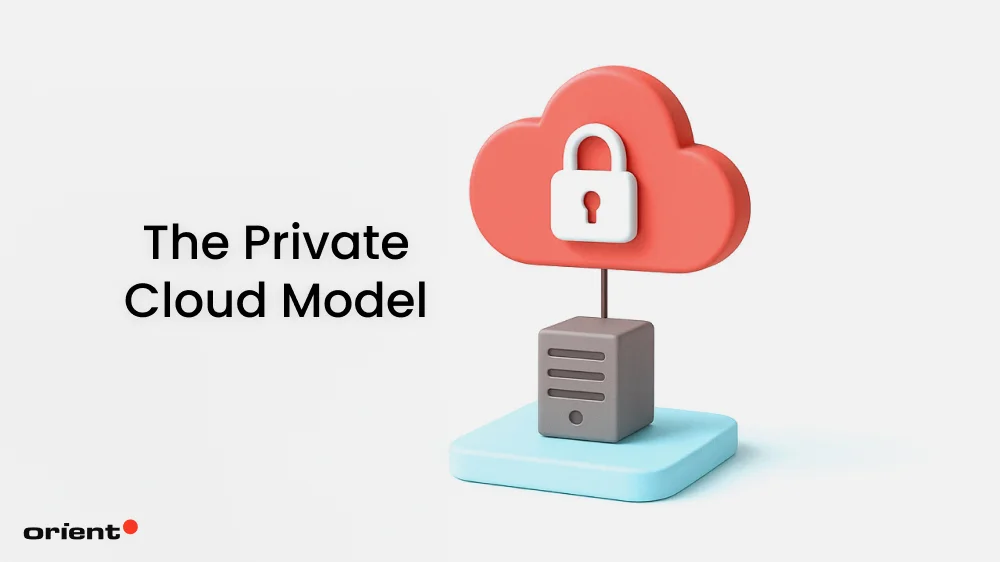
Architecture
Single-tenant Environment: The Private Cloud deployment model is similar to a single-family house: only one organization can use this model, and it has exclusive access to the entire cloud infrastructure. As opposed to the Public Cloud, here the entire infrastructure, including servers, storage, and networking, is dedicated to a single customer. This design offers better control, high-performance with critical workloads, and greater security of delicate information.
On-premises vs. Hosted: In the Private Cloud model, there are two types of architecture assets:
On-Premises: The physical servers, storage, and data center belong to the organization. It is similar to constructing a private villa on your own land. You plan the architecture, expand on it with the legacy systems, and have full control, but you also get the full responsibility of operations and maintenance.
Hosted Private Cloud: Instead of building everything on your own land, you move into a dedicated facility run by a provider. This can take two forms:
- Colocation: like renting a piece of land within a secure compound to construct your own villa. You bring your own servers (the house), but the provider provides utilities, guards, and maintenance of the compound.
- Dedicated Hosting: like leasing an entire building exclusively reserved for you. The provider owns the servers (the house) and handles power, cooling, and hardware upkeep, while you enjoy private, unrestricted use.
Ownership
Customer-Owned and Managed: Whether deployed on-premises or hosted through colocation or dedicated hosting, the company is directly responsible for configuring servers, managing applications, applying security patches, and enforcing compliance policies.
High Initial Investment: Implementation of a Private Cloud involves highly specialized and enterprise-grade hardware that is priced high. Servers use the Intel Xeon or AMD EPYC processors, which costs hundreds of thousands of dollars, and ECC memory that can be expanded to hundreds of gigabytes or even terabytes, which is much more expensive than the common RAM.
Storage has to be done with high-quality NVMe SSDs instead of consumer-grade drives, and the network backbone typically requires 25 to 100 GbE switches, both of which can cost tens of thousands of dollars each. Beyond the hardware resources, organizations need to invest in highly skilled human resources to design, configure, and maintain the system, which takes the preliminary investment in deploying a Private Cloud to the millions.
Access Control
Secure Network: The resources are not exposed to the open internet. The access is directed through corporate LANs or encrypted VPNs and is sometimes augmented with MPLS connections or sophisticated firewalls. The effect is a confined perimeter with traffic closely checked and verified, and reducing the attack surface by far.
Granular Control: A Private Cloud provides the organizations with the option of hardening security at various levels. Next-generation firewalls are used to filter the traffic at a low level, micro-segmentation maintains the isolation of workloads, and the IDS/IPS systems identify and eliminate intrusions in real time. Together with RBAC and identity federation, access is strictly enforced and checked in a continuous manner.
Such features allow for the creation of a zero-trust architecture, in which all users and workloads are not trusted by default, and verification is ensured at each stage. The effect is actual: sensitive financial databases can be safeguarded against the inner development settings, regulatory frameworks, including HIPAA or PCI DSS, can be met with accuracy, and policies can be modified promptly with the emergence of new threats.
The Hybrid Cloud Model
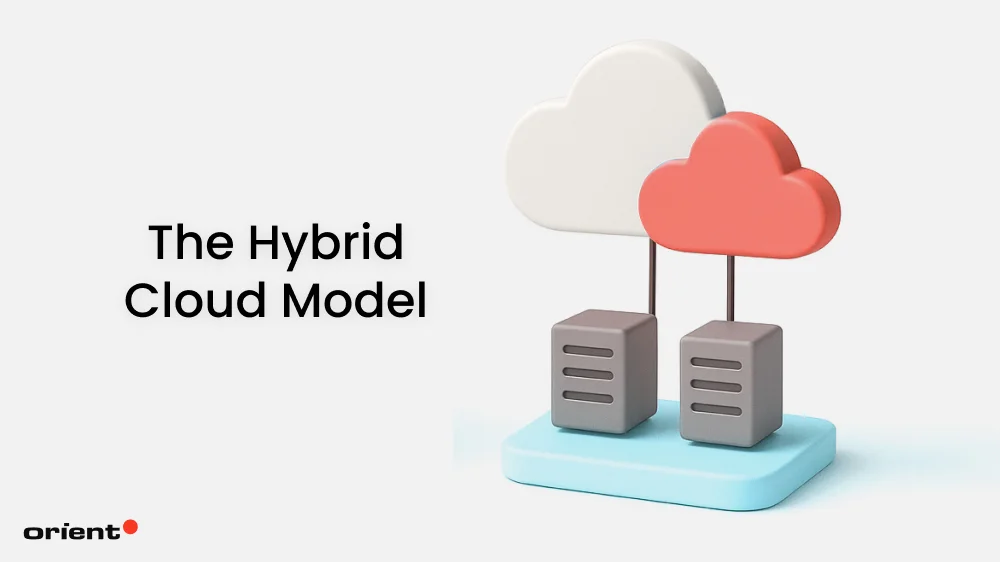
Architecture
Interconnected Environments: When a Private Cloud is linked to a Public Cloud by a dedicated network or a secure channel, like AWS Direct Connect, Azure ExpressRoute, or other networking infrastructure, it creates a hybrid cloud environment. This type of cloud deployment design enables cloud resources and apps to be transferred comfortably through the environments, granting the organizations to capitalize on the benefits of both of them: the high level of security, the ability to protect sensitive data and manage of the Private Cloud, and the speed of scaling up and down, cost efficiency, and the effectiveness of services of the Public Cloud.
Workload Portability: The hybrid cloud allows organizations to locate every cloud computing workload in the location that is responsive to its needs. An example is that a firm may operate its customer database and in-house finance systems on the Private Cloud deployment model to safeguard itself with required compliance and tight security policies. Meanwhile, e-commerce platforms or data analytics applications can be put on the Public Cloud deployment model to meet the needs of unexpected traffic or spikes. The Public Cloud allows site scaling automatically during product launches or seasonal spikes without impacting sensitive internal systems on the Private Cloud.
Ownership
Shared Responsibility: The model provides shared responsibility, as sensitive data, critical workloads, and the model of deployment of a Private Cloud are controlled by the organization and define the security features, access policies, data encryption, and compliance monitoring within the Private Cloud. In its turn, the cloud service provider takes care of the Public Cloud infrastructure, such as physical hardware, server provisioning, patching, virtualization technologies, and network security.
As an example, in moving the resources or records of data analytics from the private to the Public Cloud of the hybrid analytics, the organization takes care of encryption and limited access, whereas the provider takes care of the availability, reliability, and separation of the other tenants.
Access Control
Balancing Public and Private Access: Both have native access controls, with the inclusion of internal policy in the Private Cloud and IAM-based on the provider in the Public Cloud, but the central system aligns the roles, permissions, and service models between the two. Access to applications is verified using multi-factor authentication when employees access the application, and conditional rules, including device security, location, or time of access, are applied. This is done through network segmentation, firewalls, and encrypted channels that keep the compliance and security intact; therefore, only authorized users have access to the Public and Private Cloud resources.
Managing Data Flow: Hybrid Cloud is based on either hybrid replication, change data capture (CDC), or event-driven pipelines to propagate updates on-the-fly, considering latency, bandwidth, and the underlying infrastructure constraints. All transfer is done in TLS-encrypted connections, and it has regular policy-based key management. Request orchestration to and through the environment that contains the authoritative data is guided by a workflow to avoid stale information or conflicts. Constant tracking, replication, latency, and error-controlling processes initiate automatic retries or warnings when needed.
The Community Cloud Model
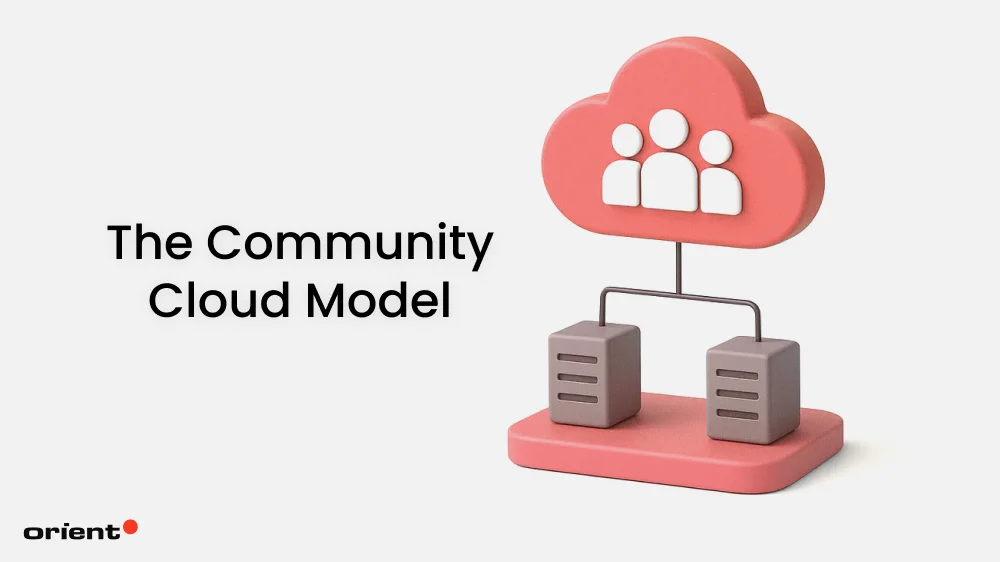
Architecture
Shared Infrastructure: Community Cloud is developed when multiple organizations share resources, such as funding, technology, and staff, to construct a common cloud infrastructure that serves a given group as opposed to a single organization, like in a Private Cloud. Sharing servers, storage, and networking facilitates members of the community, and management can be done either collectively or by the management through a cloud service provider, which lowers the cost of operation and maintenance versus each organization running its own Private Cloud.
Customization & Compliance: Custom policies, encryption standards, and audit trails are put in place so that it can be compliant with any regulations (like GDPR or HIPAA) and will enable the community to work collaboratively without violating any data protection standards.
Ownership
Collaborative Ownership: Within a Community Cloud, there is distributed responsibility among all stakeholder organizations over the infrastructure instead of individual control of specific parts. The governance is designed as a type of agreement or a steering committee, where members, as joint decision-makers, can make decisions on policies, resource distribution, regulating access, and dictating compliance. This enables no particular organization to run the cloud unidirectionally, which facilitates transparency, accountability, and a collaborative atmosphere that is dynamically transformed to accommodate the mutually agreed objectives of the community.
Cost-Sharing: The sharing of costs would usually be used depending on usage (usage-based), the kind of services utilized, or even an agreed percentage based on the agreements made in the governance. Through resource sharing, the community will be able to cut down total costs. It can save 30-50% with scale but create a sense of community, shared accountability to sustainability, including sharing security, regulations, and resource optimization.
Access Control
Restricted Access: It implements the capability of authorized member organizations to share resources and provides complete protection of sensitive information. As with a group of hospitals, there is the possibility that individual hospital members will provide aggregated data on patient outcomes or treatment regimens to further research and enhance clinical practice, whereas patient records and organizational secrets will always remain highly confidential to individual institutions. The balance of such an approach will allow working together and sharing knowledge while preserving confidentiality, which will result in the enhancement of trust and unlocking the potential of the common cloud resource.
Unified Policies: Unified Policies in a Community Cloud extend beyond mere security and provide a governance structure to represent the common interests of the community, such as regulatory compliance specific to the industry. The IT governance framework can incorporate models of IT governance such as COBIT, ITIL, and ISO/IEC 27001 so that member organizations can be consistent. An attractive policy model enables the involved institutions to exchange resources with the security of participation in research institutes or universities, and not to furnish information on sensitive subjects. Policies are typically formalized in a shared governance agreement, with regular community meetings to update rules in response to regulatory changes or evolving operational needs.
The Multi-cloud Model
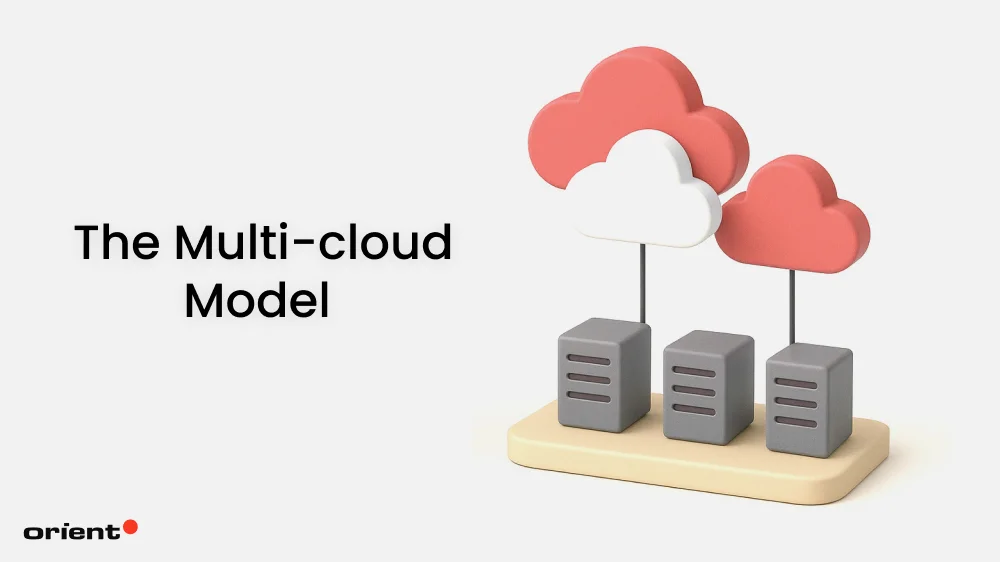
Unlike the conventional deployment models such as Public, Private, Hybrid and Community Clouds, which present ownership, management and access controls. Multi-cloud is a business strategic philosophy where companies work with multiple cloud providers at the same time. It is a strategy that concentrates on the sourcing, integrating and orchestrating of services among providers instead of who owns or controls the cloud.
The key aims of a multi-cloud strategic approach include eliminating vendor lock-in, enhancing resiliency, and leveraging the unique advantages of various providers by tapping into their respective strengths. An example related to this is Adobe, the company take advantage of AWS in respect to advanced AI services, Azure in respect to an efficient integration of Office 365, and Google Cloud in respect to a big data analytics solution. With a mixture of these sites, businesses will be able to enhance performance at minimal costs and also functionality without losing flexibility.
Overall, multicloud is not about one type of cloud, but it is more about a flexible multi-vendor strategy to supplement traditional strategies of deployment. It also offers elasticity, resiliency, and specialized services to allow the organizations to scale their services to meet the diverse business requirements as well as reduce risk.
Comparative Analysis: A Technical Breakdown
To help you quickly compare the key differences between the four primary cloud deployment models, here is a simple table. It focuses on three core pillars to give you a clear, at-a-glance understanding of each model’s fundamental characteristics.
| Cloud Model | Cost | Security | Scalability | Reliability | Level of Data Control | Best For |
|---|---|---|---|---|---|---|
| Public Cloud | Low | Moderate | High | High (SLAs & distributed infra) | Moderate | Startups, SaaS |
| Private Cloud | High | High | Moderate | High if well-managed | Very High | Regulated industries |
| Hybrid Cloud | Moderate | High | High | High (private + public redundancy) | High to moderate | Enterprises, DR strategies |
| Community Cloud | Shared | High | Low–Moderate | Medium–High | High within community | Collaborative organizations |
How to Choose the Right Model
Selecting an appropriate cloud deployment model is heavily dependent on issues of budget, compliance needs, and types of workloads that an organization conducts.
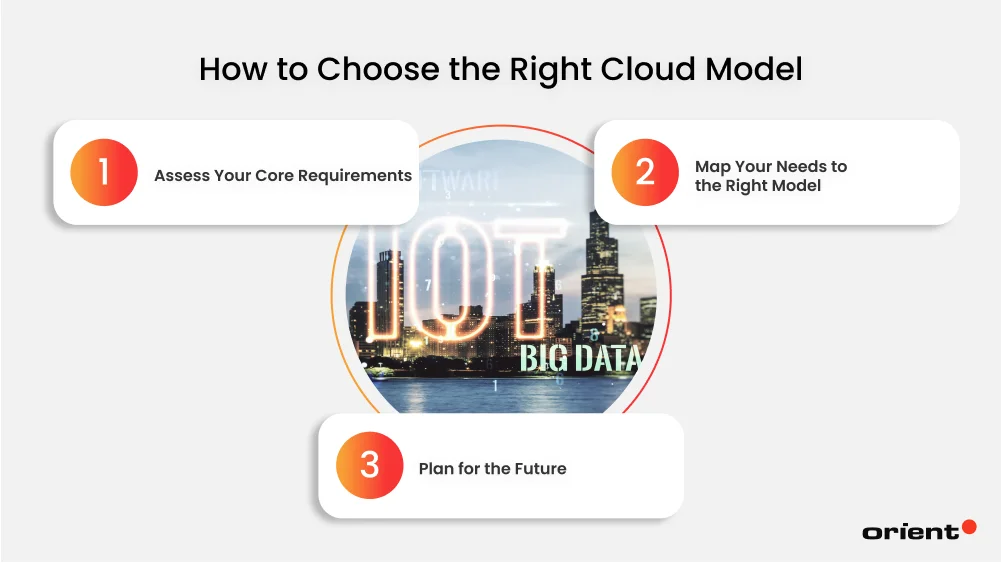
Step 1: Assess Your Core Requirements
Prior to considering any cloud model, it is necessary to evaluate in detail the needs of your organization. These are the basic questions you should begin with:
- Data Sensitivity & Security: How sensitive is the data you plan to store and process? Do you operate in a highly regulated industry (e.g., healthcare with HIPAA, finance with PCI-DSS)? If data sovereignty and strict compliance are non-negotiable, a private or hybrid model may be the only viable option.
- Cost and Budget Model: Does it make sense to use a big single capital spend on (CapEx) vs. a more flexible pay-as-you-work operational spend on (OpEx)? The initial hardware and staff input is required in the Private Cloud as opposed to the pay-as-you-go scenario of the Public Cloud.
- Scalability & Performance: Is it a workload that can fluctuate at unpredictable times, or is it consistent and predictable? Sudden demand increases are used for near-infinite scalability of the Public Cloud. A Private Cloud gives relatively constant performance to industries, but is relatively expensive and sluggish to expand.
- Management & Control: To what extent do you like having control of your infrastructure? If you are ambitious enough to have all the underlying hardware, networking, and security in control, a Private Cloud is the solution. In case you want to outsource the maintenance and management to a third party, the Public Cloud is better.
Step 2: Map Your Needs to the Right Model
After examining your needs, you will be able to overlay them into the cloud model that best fits.
- Choose Public Cloud if: Cost and high performance are your top priorities, and you need to scale quickly and pay minimal attention to administration. It optimally suits startups and web applications where traffic is not predictable, as well as non-sensitive workloads such as development and testing environments.
- Choose Private Cloud if: Data security, compliance with regulations, and full control are the key considerations. It would best suit those government agencies, financial institutions, and corporate organizations that contain highly confidential information and have a stable and predictable workload.
- Choose Hybrid Cloud if: You are required to strike a balance between Public and Private Cloud. The trend is ideal in a staged cloud migration or in companies that should be able to safeguard sensitive information and utilize the flexibility of the Public Cloud to scale down less important applications.
- Choose Community Cloud if: Your organization has certain compliance, security, or mission requirements that are shared with a group of organizations. Managing costs alone or splitting them with the aim of sharing costs enables this model to be included in the powerful option of consortia and research institutions.
Step 3: Plan for the Future
Your cloud strategy cannot and must not remain the same. Take into consideration your long-term objectives. By enabling you to take new technologies and having no vendor lock-in, a hybrid or multi-cloud policy can provide your business with a future-proofing effect. The correct decision currently would get transformed as your business and the cloud pockets evolve.
These examples show that no exact model can be applicable to every scenario, so it is critical for organizations to carefully examine their unique requirements, such as workload features, security needs, and budget limits, through decision-making.
To make an informed decision, companies need to perform a workload analysis and consult with professional cloud architects like Orient Software to enable them to create a cloud strategy that best meets cost savings, performance, and compliance.

